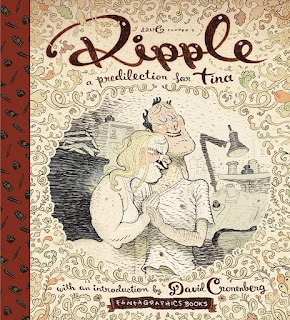A lot of the initial thrill and outrage of this book - just over a hundred years ago now - was because it was assumed or promoted as
true, in some central sense. That it really happened, more or less like Radiguet wrote it, just a couple of years earlier, to the author himself.
There's an afterword in the edition I read, by the editor and translator Robert Baldick, from 1971, which, among other things, circles that story. There was a scandal some years later - after Radiguet's very-young death - involving the man who declared he was the other man in the story, and that his wife's diary - "borrowed" by Radiguet - was one basis for the novel.
(At this remove, I wonder why that man came forward at all. Even if there were rumors, what good would it do him to confirm them and say "I am the model of the cuckolded husband in this scandalous novel"? There's something very French in every aspect of the novel and the story around it.)
Baldick ends his afterword by, in his scholarly, serious way, throwing his hands up in the air and saying that we don't know what's true and never will - so all we can do is engage with the work itself, as a novel.
I don't know if that's still the case - it's fifty years past that afterword, and letters or other archives could have come to light since then - but it's always the best stance to take towards a piece of art. Look at the context, yes. See if it rhymes or is illuminated by its milieu. But it needs to be a thing in itself - needs to work as a novel - for anyone to care.
The Devil in the Flesh is a very short novel, but it is one, and it does work. I read it in A.M. Sheridan Smith's 1968 translation - I gather there is a newer one as well.
In this version, the main character is unnamed: he tells the story directly in the first person, and no one calls him by name. We can infer his name is Raymond, if we want. (I see that film versions - and possibly the newer translation - tend to give him the name François.) He comes across as young, intelligent, perhaps a bit more artless than he wants us to think.
It's a short book, but it takes some time to get to the central story: he starts out by talking about the war years in general, and how his experience, and those of his peers, was radically different than their elders. He was twelve when The Great War started, and lived in a part of France - in a town he calls F, on the banks of the Marne - far enough from the fighting to be peaceful and close enough to be exciting. So the war was not personal: he and his schoolfriends didn't have any sense they would go to fight - they assumed it would all be over before they were old enough. It was instead an escape from normal life, a time when - Radiguet implies - a lot of men were away, and boys had more room to play.
This is the first thing that would have struck the initial audience as immoral. But I found it true in that surprising way, a reminder that every big event is experienced radically different ways by different groups - that even a meat-grinder of a war, that killed and maimed millions, could be a lark and an opportunity for some people in the middle of it.
Eventually we get to the last year of the war. No one knew that at the time, of course, but the main character is telling us in retrospect, in this novel published in 1923.
He has recently met friends of the family, the Graingers. They have an eighteen-year-old daughter, Marthe, who is engaged to Jacques Lacombe, a soldier fighting at the front.
Devil is primarily the story of the main character's affair with Marthe - mostly after she marries Jacques, over roughly a year, 1917-18. It's psychologically piercing: our narrator is deeply honest about his conflicted feelings and the things he wants without knowing why or even how. Marthe is more of a cipher: the one he loves and wants and covets, but not entirely knowable, as no loved one can be knowable to an obsessed sixteen-year-old boy.
It is all quite French: their affair is widely known in this village quickly, which means that no one talks about it, but polite society mostly shuns Marthe. And our narrator's father has a fascinatingly complicated, changing reaction to his oldest son's indiscretion: sometimes counseling caution, in vague terms, sometimes clearly allowing the boy wider latitude so he can spend nights at Marthe's apartment, sometimes arguing with the rest of the family, both for and against the affair.
Marthe becomes pregnant: the narrator is sure it is his child. But he urges her to sleep with her husband during a leave, so it could be plausibly Jacques' child - and there's a small chance it was anyway, from around the time of their wedding.
Of course it all ends badly. Even in a French novel, even in the 20th century, it had to end badly. (The real-world version, amusingly, seems to have just ended - the two adulterous lovers separated, possibly never to see each other again before Radiguet died at the age of twenty, and the child grew up.) But it ends badly in a literary way, an appropriate one for the novel, and in a way that closes the book solidly.
This is a minor classic, a short one, and an odd one - but it's fascinating and distinctive, and still worth reading a century later.















